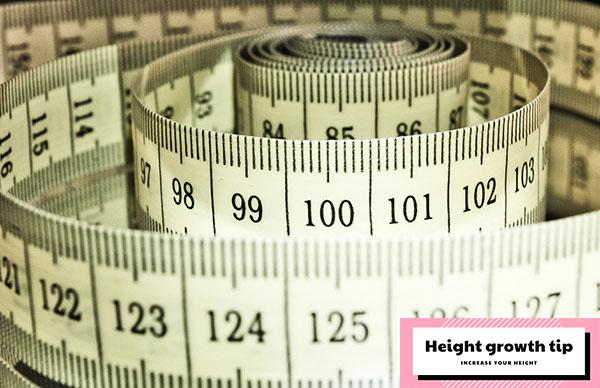Consider for a moment the simple act of measuring one’s height. It’s a seemingly mundane task, yet it holds profound significance. It serves as a tangible marker of our individual growth and development, a reflection of the myriad factors that shape our physical being. Have you ever paused to contemplate how your own stature fits into the broader spectrum of human height? Are you curious to explore the intricate web of influences that contribute to our vertical dimension?
In the chapters ahead, we’ll delve into the complexities surrounding human stature. From the role of genetics to the impact of nutrition and lifestyle, we’ll uncover the myriad elements that contribute to our vertical trajectory. Whether you’re an enthusiast of anthropology, a health-conscious individual, or simply intrigued by the mysteries of human growth, join us on this captivating journey of exploration and discovery.
Precisely Determining Average Height Based on Age
The precision in calculating the average human height hinges upon meticulous data collection carried out by national health agencies. These expansive datasets compile measurements from individuals as young as two years old, capturing each data point with exceptional accuracy. Measurements are typically recorded to the nearest 0.1 centimeter using advanced digital stadiometers.
Should you wish to ascertain your own height without the aid of a healthcare professional, you can follow these straightforward steps to ensure the highest level of accuracy:
- Acquire a flat, unyielding object, such as a sturdy book or ruler.
- Stand with your feet firmly planted on the ground, maintaining a straight, upright posture with your back against a vertical surface.
- Position the selected object directly above your head, ensuring that it aligns perfectly and runs parallel to the floor.
- Employ a pencil to mark the precise point on the wall where the object makes contact with the apex of your head.
- Finally, with unwavering precision, measure the vertical distance from the floor to the marked point on the wall.
Now that you have diligently determined your height using this meticulous method, would you like to proceed and compare it against the data presented in the average height chart?

Average height chart for men
Below is the average height for boys for various ages, according to the CDC [2].
| Age (years) | 50th percentile (inches and centimeters) |
| 2 | 34.3 inches (87.12 cm) |
| 4 | 40.5 inches (102.87 cm) |
| 6 | 45.4 inches (115.3 cm) |
| 8 | 50.4 inches (128 cm) |
| 10 | 54.5 inches (138.5 cm) |
| 11 | 56.4 inches (143.5 cm) |
| 12 | 58.7 inches (149 cm) |
| 13 | 61.4 inches (156 cm) |
| 14 | 64.6 inches (164 cm) |
| 15 | 66.9 inches (170 cm) |
| 16 | 68.3 inches (173.5 cm) |
| 17 | 69.1 inches (175.5 cm) |
| 18 | 69.3 inches (176 cm) |
| 20 | 69.6 inches (176.8 cm) |
Average height chart for women
Next is the average height of girls for various ages, according to the CDC [3]. Check it now!
| Age (years) | 50th percentile (inches and centimeters) |
| 2 | 33.5 inches (86.36 cm) |
| 4 | 39.6 inches (100.5 cm) |
| 6 | 45 inches (114.3 cm) |
| 8 | 50.2 inches (127.5 cm) |
| 10 | 54.3 inches (138 cm) |
| 11 | 56.7 inches (144 cm) |
| 12 | 59.4 inches (151 cm) |
| 13 | 61.8 inches (157 cm) |
| 14 | 63.2 inches (160.5 cm) |
| 15 | 63.8 inches (162 cm) |
| 16 | 64 inches (162.5 cm) |
| 17 | 64 inches (163 cm) |
| 18 | 64 inches (163 cm) |
| 20 | 64.2 inches (163.3 cm) |
Unlocking Your Full Growth Potential: A Comprehensive Guide
The pursuit of reaching one’s maximum height potential has intrigued many for generations. While genetics lay the foundation for our ultimate stature, there exists a world of possibilities to explore when it comes to enhancing growth during the crucial phases of childhood and adolescence. In this comprehensive guide, we delve into the intricate process of calculating average height by age and uncover a treasure trove of techniques to stimulate growth and development.
The Genetic Blueprint:
At the heart of our height journey lies our DNA, the mastermind behind our physical stature. Tall parents often pass down the genetic torch of height to their offspring, setting the initial trajectory. However, genetics are just the starting point; the final destination is shaped by a multitude of environmental factors.
Nourishment: The Key to Growth:
Nutrition emerges as a cornerstone in the quest for growth. Inadequate nourishment can shortchange a child’s potential when compared to those who enjoy a well-balanced diet. To unlock the growth potential, experts recommend a diet rich in vegetables and fruits, supplying essential vitamins and minerals. Incorporating protein-packed foods such as meat, seafood, poultry, nuts, eggs, yogurt, milk, soy, salmon, cheese, nuts, and seeds, along with calcium sources, bolsters overall health and bone development.
Expecting mothers should diversify their diet to ensure both maternal and fetal bone health. This entails adding fruits, nuts, legumes, citrus fruits, pasteurized dairy products, leafy greens, fish, and meat into their dietary regimen.
Exercise: The Catalyst for Growth:
Regular physical activity emerges as a pivotal player in development by strengthening muscles and bones while sparking the production of human growth hormone (HGH). A spectrum of sports and physical activities have proven effective in promoting muscle and bone growth. Activities like basketball, soccer, swimming, jogging, yoga, and football not only stimulate physical development but also trigger the release of HGH, nurturing growth during childhood and puberty.
The Power of Slumber:
Sleep, a critical factor in growth and development, facilitates the release of vital growth hormones. The recommended amount of sleep varies by age, with chronic sleep deprivation hindering healthy growth and contributing to various health concerns. Prioritizing quality sleep through a consistent sleep schedule and creating an optimal sleep environment becomes paramount for overall well-being, development, and growth.
Basking in Sunlight:
Sunlight, a natural source of vitamin D, plays a pivotal role in bone health. When dietary sources fall short, spending just 5-15 minutes in direct sunlight a few times a week can yield remarkable benefits. Targeting the face and arms for exposure, and applying sunscreen for extended outdoor activities, helps ensure adequate vitamin D intake.
Sugar Management:
Excessive sugar intake can displace nutrient-rich foods in one’s diet, hampering optimal growth and height attainment. Additionally, it can lead to weight gain, obesity, and diabetes. Experts recommend daily sugar intake to be less than 25 grams, and replacing sugary treats with healthier alternatives guarantees essential nutrients without excessive calories.
The Weight Equation:
Maintaining a healthy weight is pivotal, as excessive weight gain and obesity can negatively impact height. Increased body weight can alter bone structure, weakening it and resulting in reduced height. Striving for an ideal body weight minimizes obstacles to growth potential.

Optimizing Salt Intake for Improved Health:
While salt undeniably plays a pivotal role in maintaining vital bodily functions, it’s important to be mindful of its consumption levels. Excessive salt intake can have adverse consequences, notably increasing the excretion of calcium, which in turn can lead to calcium depletion and raise the risk of developing osteoporosis.
Elevating Height Through Strategic Wardrobe Choices:
The art of dressing intelligently can perform marvels in the art of creating a taller appearance. Deliberate choices in your attire can artfully craft the illusion of increased height. Consider the elegance of high-waisted garments, footwear sporting elevated soles, monochromatic ensembles, hemlines that graze the upper leg, impeccably tailored jackets, combinations like crop tops with skirts, or outfits adorned with vertical stripes. These sartorial selections can skillfully elongate both your legs and torso, bestowing an illusion of heightened stature.
Height Optimization through Stress Management:
The persistent grip of stress can cast a shadow over your growth potential. It frequently manifests as muscular tension, particularly in the back and shoulders, which can inadvertently diminish your perceived height. Moreover, the hormonal responses triggered by chronic stress can hinder your natural growth processes. Hence, it becomes paramount to seek and implement effective stress management strategies that can both nurture your well-being and contribute to your optimal growth potential.
Supplement Utilization: An Act of Prudence:
In select circumstances, the judicious use of supplements may be justified, either to support children’s growth or to prevent height loss in older adults. These supplements serve as valuable sources of essential vitamins, minerals, and nutrients crucial for bone health and overall growth. However, exercising caution in their usage is imperative. Adhering strictly to recommended dosages and schedules is essential. It is imperative to bear in mind that supplements should be seen as complementary to a holistic, health-conscious lifestyle, as elaborated upon earlier, in order to achieve the desired outcomes.
FAQs
Here are some frequently asked questions (FAQs) about the article: “Average Height of Men and Women Over Time.”
Q1: What does the article discuss regarding the average height of men and women over time?
A1: The article explores how the average height of men and women has changed throughout history. It likely discusses trends, factors influencing height, and potential implications of these changes.
Q2: Are there any historical trends in the average height of men and women mentioned in the article?
A2: The article likely covers historical trends, highlighting how the average height of both genders has evolved over the years. It may touch upon factors such as nutrition, healthcare, and genetics contributing to these trends.
Q3: Does the article discuss regional or cultural variations in average height?
A3: The article may mention regional or cultural variations in average height. It might delve into differences between countries or populations and examine the reasons behind these variations.
Q4: Are there any health implications associated with changes in average height over time discussed in the article?
A4: The article may discuss health implications related to changes in average height. It might touch upon how height can be an indicator of overall health and well-being.
Q5: What factors are typically cited as influencing changes in average height over time?
A5: The article is likely to mention various factors influencing changes in average height, such as nutrition, access to healthcare, socio-economic conditions, and genetics.
Q6: Are there any projections or predictions regarding future changes in average height mentioned in the article?
A6: The article might speculate or provide insights into potential future changes in average height based on current trends and factors affecting height.
Q7: Does the article provide recommendations or insights on how individuals can optimize their own height and growth?
A7: The article may offer suggestions or insights on how individuals can support healthy growth and maximize their height potential during childhood and adolescence.
Q8: Is there information about how scientists or researchers gather data on average height over time?
A8: The article might discuss the methods and techniques used by scientists and researchers to collect data on average height trends, such as historical records, surveys, and medical studies.
Q9: Does the article discuss any recent or noteworthy studies or findings related to changes in average height?
A9: The article may reference recent studies or findings that shed light on changes in average height and their implications.
Q10: Where can I find more detailed information on this topic if I want to explore it further?
A10: The article might provide references or sources where readers can access more in-depth information on the topic of average height trends over time, such as books, academic papers, or reputable websites.

